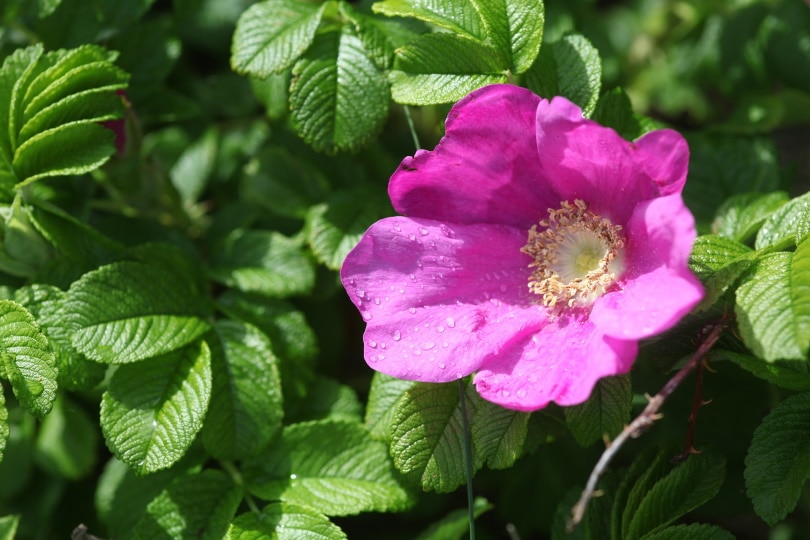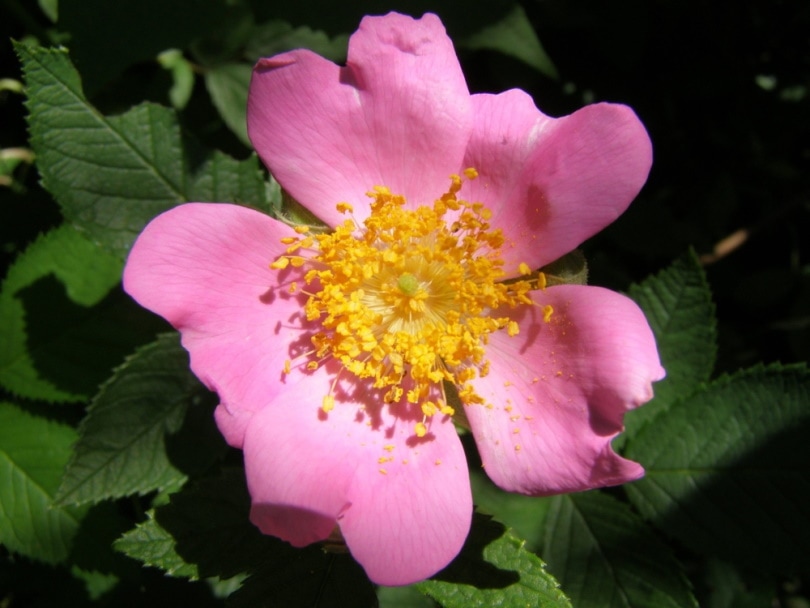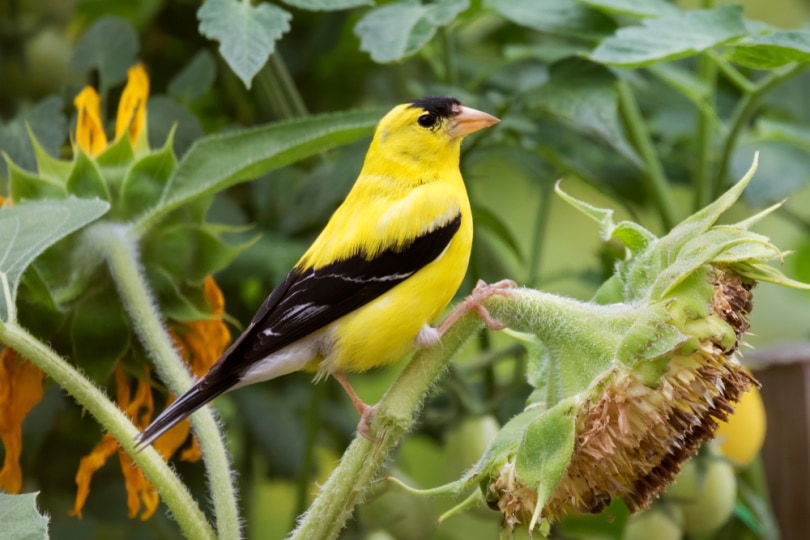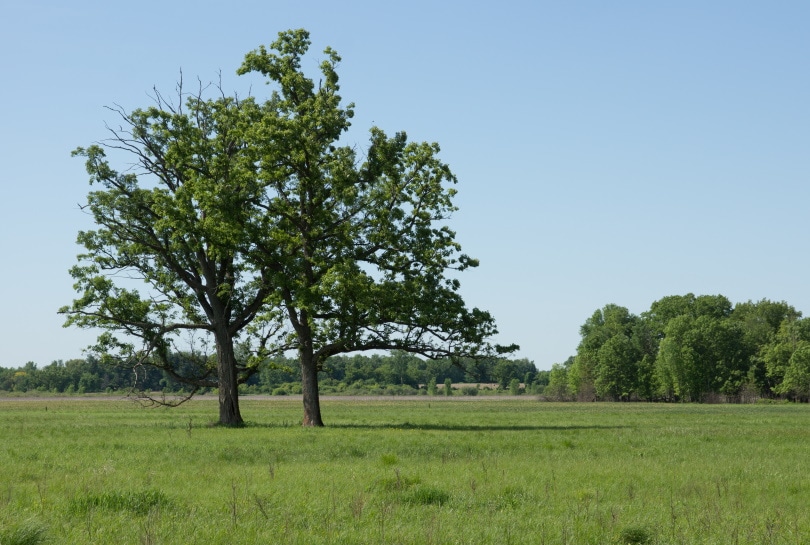What Is the State Flower of Iowa? Uses, Reasons, & Characteristics
-
Pete Ortiz
- Last updated:

Iowa became the 29th state in the US in 1846. The state flower of Iowa is the wild prairie rose. It was designated by the Iowa legislature as the official state flower in 1897, along with a corresponding state seal and flag.
The wild prairie rose has been used as a symbol for many things for a long time. It symbolizes love and peace between countries. It’s also a symbol of the state’s history. In ancient times, it represented femininity in art.
Perhaps you’re asking yourself how the wild prairie rose became the Iowa state flower. Then, don’t fret! We’ll tell you everything you need to know about the Iowa state flower, wild prairie rose.
Origin of the Wild Prairie Rose
The wild prairie rose, also known as prairie rose, is a native North American species of rose. It’s a member of the genus Rosa and the family Rosaceae. Its scientific name is Rosa pratincola but it has been updated to Rosa arkansana.
The flower is common between the Rocky Mountains and the Appalachian. It’s also found in Alberta, Saskatchewan, Manitoba, and Florida. The plant grows in open areas such as prairies and meadows.
Wild prairie roses¹ come in many colors, including white, pink, and red. Most wild prairie roses have five petals and stamens (male reproductive organs), but some have more than five petals or fewer stamens.

Iowa State Flower: How Was It Decided?
The wild prairie rose is a beautiful wildflower that grows in Iowa’s natural landscape. This flower was chosen as the official Iowa State Flower for various reasons, including:
- It’s native to Iowa.
- It is widespread in many parts of Iowa. You can see it along roadsides and fence rows throughout the state during its blooming season.
Several wild rose species grow in Iowa. They have similar appearances so you can hardly tell them apart. Additionally, all these species can cross-breed naturally. The Iowa legislature agreed that any wild rose species could be considered a state flower. They did not choose one species.
The wild prairie rose is used as a symbol of love, beauty, resilience, and even freedom! Many people believe that once they pick a wild prairie rose, they’ll be granted good luck or fortune. This belief comes from the Native American culture.
In 1897, the Iowa state presented the silver service to the battleship USS Iowa. Among the decorations used on the silver service was the wild rose. The Iowa legislature chose the wild rose because of this.
A bill seeking to make it the floral emblem was brought before the Extra Session of the 26th General Assembly of the Iowa State. Senator Mitchell introduced the bill on May 5th, 1897.
The General Assembly also sought advice from the Iowa Federation of Women’s Clubs. They met in Dubuque, Iowa. So, they voted, and the wild rose garnered an overwhelming majority of the votes. It became the official floral emblem on May 7th, 1897, as designated by the Iowa legislature.
As already mentioned, no particular wild rose species was designated, but the wild prairie rose is cited as the official Iowa state flower.

Characteristics of the Wild Prairie Rose
The beauty of wild roses can be hard to describe. But, there’s something about their colors and fragrance that speaks of untamed and natural beauty.
- The Stem: The wild prairie rose has a long and thin stem with bristly hairs on it. These hairs protect it from insects that might want to eat its leaves and flowers. It’s green with brown stripes when young but turns gray as it ages. The stem can grow up to 2 to 4 feet tall. As it grows, prickles develop on it and at the base of older stems. It has few branches except at the top, where new growth occurs.
- Leaves: The leaves are about 2 inches long and 1 inch wide, with five rounded lobes on each leaf blade. The entire leaf is hairy with a light grayish-green underside. This characteristic helps keep the plant cool during hot weather. It also protects it from insects such as spider mites. These leaves are also serrated along their edges and pointed at the tip end.
- Flowers: The wild prairie rose flowers grow on long stems. Each flower has five petals shaped like a star, forming a tube shape around the center of the flower. There are many stamens at the center of the five petals. They have yellow anthers, but the petal colors range from light to deep pink. Also, they have yellow centers with darker tips on them. The flowers can appear in clusters or can be solitary at the ends of branches. Usually, they appear in late spring and early summer, between June and July.
- Habitat: The wild prairie rose is a perennial shrub¹ growing naturally near prairies or meadows. It thrives in various soils including clay, but it does well in well-drained sandy soils with a pH value of 5.6 to 7.0. It thrives in full sun or partial shade with adequate moisture during the growing season, but it does not tolerate extreme heat or cold well. So, plant them in areas that receive at least six hours of direct sunlight each day during the growing season. If possible, choose an area where they can be protected from strong winds that can damage the stems and flowers.
- Height: Wild prairie rose bushes can grow to 3 or 4 feet high depending on where they are planted and how much water they receive. They also spread out over time.

Uses of the Wild Prairie Rose
- Medicinal Uses: The wild prairie rose has been used as a medicinal plant by Native Americans for centuries. It can even treat many different ailments including fevers, colds, eye irritation, and headaches. Also, you can crush the leaves and use them as an ointment for treating burns.
- Culinary Uses: You can use the wild prairie rose as a spice and food flavoring. It’s often used in tea and herbal remedies¹. The flowers can be added to salads or soups for extra flavor; they are also dried and ground into powder for cooking.
- Cosmetic Benefits: The oil from the wild prairie rose can be used as a natural skin moisturizer. You can add it to bathwater for its soothing effects on dry skin and eczema symptoms. The seeds are also used in some cosmetic products. They contain antioxidants that help prevent skin damage caused by free radicals.
Other State Symbols in Iowa
Besides the state flower, Iowa has other state symbols. Here are some of them!
State Bird: The American Goldfinch
The goldfinch was designated as Iowa’s official state bird in 1933. The Senate voted, and many members chose the American goldfinch. Its bright plumage and cheerful song make it a popular cage bird. It is a hardy wild bird that can survive winter temperatures.
It’s named for its golden-yellow coloration, although the male’s head and back are greenish-black. In Iowa, the goldfinch is most commonly found in parks, yards, and gardens. It feeds on weed seeds, grain, and insects occasionally.

State Rock: Geode
Iowa’s state rock is the geode. These are hollow, round rocks with crystals inside them. They come in different colors and sizes, but they all have the same structure. The geode is a rare and beautiful rock, but it’s plenty in Iowa.
In 1967, the General Assembly in Iowa designated the geode as the state rock because Iowa is renowned for the presence of geode, which even promoted tourism in the state.
State Tree: Bur Oak
The bur oak has been the official state tree of Iowa since 1961. This majestic tree grows to a height of 60 feet and has a trunk of up to 5 feet in diameter. The leaves are 5 to 10 inches long, with large terminal lobes. They turn bright yellow in the autumn. The acorns are large with bristly caps that allow them to float on water until they germinate.
The bur oak is a crucial part of Iowa’s diverse ecology. It’s found in Iowa in plenty. Besides, it provides food, shelter, and nesting cover for many birds and animals in Iowa.

Conclusion
So, there you have it! That’s how the state flower of Iowa came to be the wild prairie rose. Today, it’s widely recognized as Iowa’s state flower. There’s no other flower crucial to the people of Iowa than their beloved wild prairie rose. Usually, a state’s official flower represents its history, culture, or natural beauty in some way.
Hopefully, this article has shed some light on that topic, whether you’re a resident of Iowa or just visiting.
See also:
- Does Iowa Have a State Insect? What You Need To Know?
- What Is the State Flower of Oregon? How Was It Decided?
Featured Image Credit: Jay Stuhlmiller, Shutterstock
Contents


